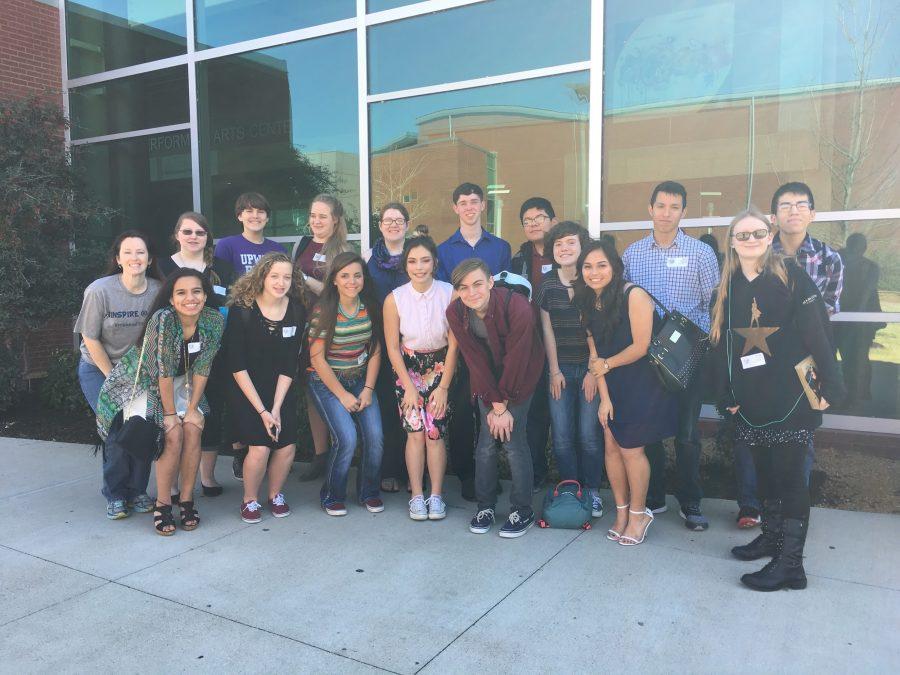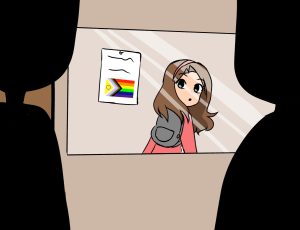Art students work towards competition
March 8, 2017
After nearly a year of anticipation and preparation, art has kicked off their competition season. Most recently, they went to Visual Arts Scholastic Event, or VASE, competition which was held on February 11th.
The program had 19 out of 24 students advance to area, and one student advance to state.
“Xavier Gonzales advanced.” Ms. McLemore, the art teacher, said. “He took an 11,000 piece beaded project that he did almost entirely on his own.”
VASE competition is one of the few events that isn’t done online and is flexible, giving students a room for creativity.
“For VASE competition, there are 29 different categories,” McLemore said. “It is the only event in which students are interviewed about their art and asked specifically about their pieces. Half of their score is based on the interview, so it doesn’t matter how beautiful their piece is – if they can’t communicate, it doesn’t matter.”
For this portion of the competition, students must be able to explain their piece to the judges.
“They’re asked what elements of design and technique they used to begin with,” McLemore said. “They’re also asked about their inspiration. They have to be able to list and talk about an artist that does similar work, and they have to know their medium well.”
The interview portion can be an obstacle for some students, especially those that are in the process of learning English.
“I have quite a few english language learners,” McLemore said. “They are penalized because they don’t speak well. The AP Portfolio is graded on language ability as well, so the benefit to our ELL kids is that they are learning to communicate and use written language, especially since it’s something they’re passionate about.”
VASE is very competitive, and less than 10 percent of entries advance to the state level.
“Students have to receive a superior rating,” McLemore said. “When you go to regional competition and receive a superior rating, you advance to area. Out of 24 pieces, 19 advanced to the area round. From there, they select very few to go on to the state round.”
McLemore said that this can sometimes be “disheartening” for students.
“We had, I believe, five perfect scores out of 24 pieces that didn’t advance,” she said. “Grace Rogers, an art student, had two perfect scores at area competition and still did not advance to state because at that point it’s completely up to the judges.”
When choosing which pieces advance, judges simply walk through those at area that received perfect scores and choose which ones they like the most, making it almost completely subjective.
“The judges really do just walk through the gym, where all the pieces that qualify for state are displayed, and put a sticky note that says, ‘I like this one,’ on pieces they think should advance,” McLemore said.
Because of the subjective nature of this process, McLemore pushes students to have the best piece of art in their category.
“What we try to explain to that kids is that if you’re going to do, for example, a graphite face, you have to have the best one there,” she said. “If you’re going to do a landscape painting, you have to have the best one, because only one is going to go on. So, at competition, there were three or four other beaded pieces, but Xavier’s was the best one, so he advanced.”
While students do take time in class to work on their pieces, much of what they do in class is preparation for contest.
“We do lots of tutorials, and spend a ton of time on basics,” McLemore said. “The actual projects students do almost completely on their own time. They spend hours on their own. Xavier worked at home for probably six weeks on his piece.”
Reagan Henry, an Art II student, demonstrates just how much dedication art competition takes.
“I did printmaking and acrylic painting this year,” Henry said. “I spent about two or three months on each piece.”
Aside from how time-consuming it can be, another part of what makes VASE such a difficult competition to advance in is who they compete against.
“Art competitions aren’t done with classifications like UIL,” McLemore said. “We don’t compete just against 4A schools – we compete against all of our education region. We go up against Mansfield, Fort Worth schools, Keller, big schools that have five or six art teachers on one campus. We compete against programs that have resources we can only imagine.”
At this point, Art has been to the Fort Worth Stock Show, Scholastic Art & Writing, and Vase, but intends to go to many more by the end of the year.
“On average, we end up competing in about eight,” McLemore said.
One of the bigger upcoming events is the Advanced Placement Portfolios.
“We have a 100% pass rate on our AP Portfolio, which I think is incredible and many people don’t know that,” McLemore said. “The average pass rate is 38 percent.”
With many more competitions to go and the competitions coming up next year already in mind, McLemore tries to take an approach that is both hopeful and practical.
“It is hard to compete against bigger schools and more resources,” McLemore said. “But we carry our own. We can still win.”







